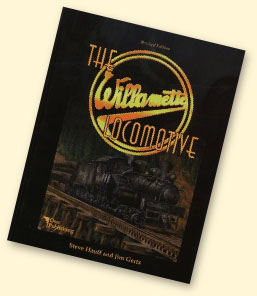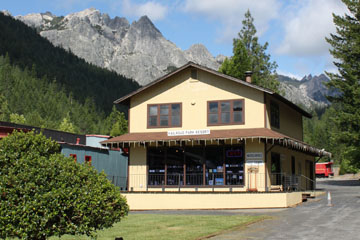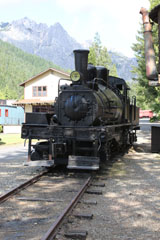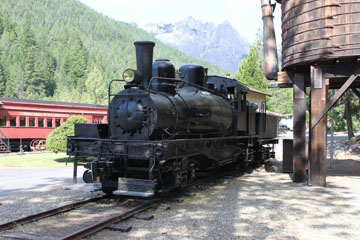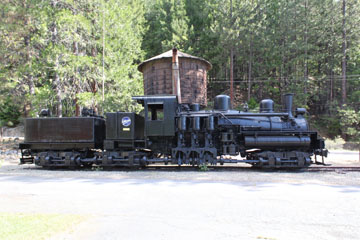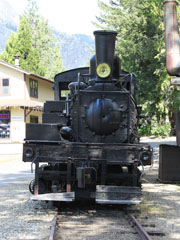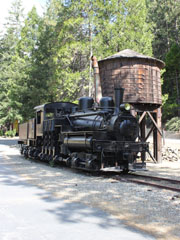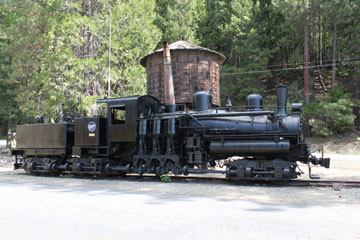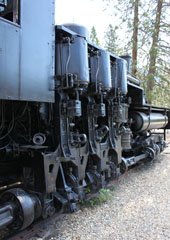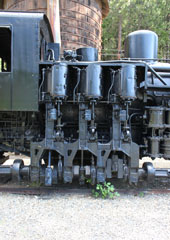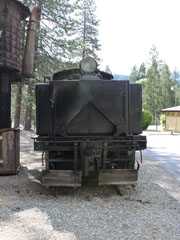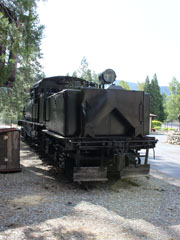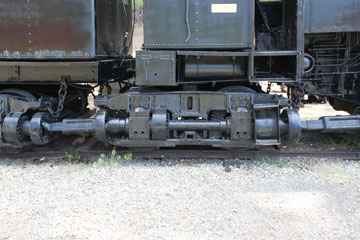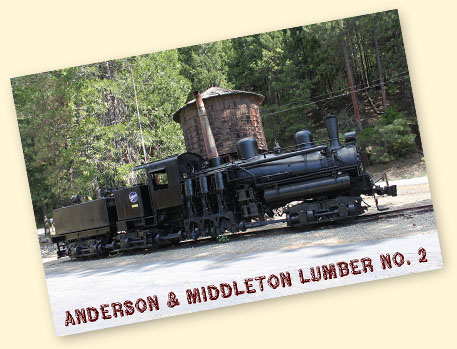

#2 was built by the Willamette Iron and Steel Works in Portland, OR, in 1926 for the Anderson & Middleton Lumber Co., in Cottage Grove, OR. In 1935, it was sold to the Western Lumber Co., in Westfir, OR (later Westfir Lumber and then Edward Hines Lumber). It was bought and rebuilt by the West Salem Machine Company in 1949 and went on to serve another fifteen years as Medford Corporation #7 in Jackson, OR. It was donated to the Siskiyou Recreational Development League in 1965 and is now on display at the Railroad Park in Dunsmuir, CA.
Willamette Iron and Steel produced its first geared locomotive in 1922. The design was based on the Lima built Shay, the patents for which had expired a few years earlier. #2 was the twenty-first, and twelve more were built before production ceased in 1929. They came in two and three truck, with two different three truck models. #2 is a standard 70-3 model. The larger 75-3 had slightly larger cylinders and produced 8½% more tractive effort.
You can see another Willamette locomotive and find out more about the history of the company on the Western Lumber #7 page of this website.
Left, #2 is just to the east of the gift shop and resort office. Below, it is parked on a short section of track beside a restored water tower.
Although it lacks any indication of its previous owners, the locomotive appears to be well looked after and still has most of its fittings.
Above, the Railroad Park Resort is just off the I-5
in Dunsmuir, CA, on the aptly named Railroad
Park Road. The park has a gift shop and
restaurant, and a lounge built inside restored passenger carriages. All the overnight accommodation is provided in retired and refurbished railroad cabooses surrounding a pool, deck and spa. The resort also has an RV park for overnight camping.
Below, the grounds are strewn with all manner of railroadiana and there are spectacular views of Castle Crags.
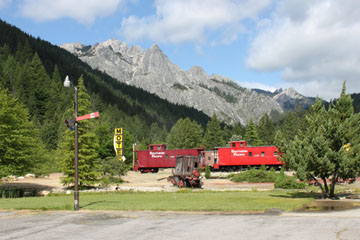
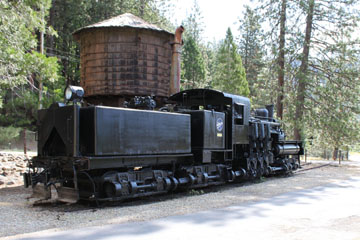
#2 measures 50’ 4” over the footboards, weighs 148,140 lbs light, 190,000 lbs fully loaded. It has three 12” x 15” cylinders. Operating at a boiler pressure of 200 psi, it delivered 30,150 lbs tractive effort.
Unlike the Shay, the Willamette’s cylinders faced in the same direction forward of the cab, reducing manufacturing costs. With fewer wear points, it allowed the valve chests to be on the outside, reducing access problems. A shorter crankshaft carrier also retained its timing much better, reducing the need for regular resetting.
The upturned V-shaped tank on the back of the tender is a reservoir to hold sand which was applied to the tracks to improve adhesion.
The rear part of the tender had a capacity of 3,000 gallons of water. The front part had a capacity of 3,000 gallons of oil.
Like the Shay, Willamettes were geared on the right side of the engine. Power was transmitted from the cylinder rods through a drive shaft running the length of the three trucks, with drive transferred to the wheels by bevel gears. The shaft has universal joints to allow for lateral and vertical motion as the engine negotiated the usually quite rough logging tracks.
Below, the universal joints on each truck are joined by a sleeve that slid back and forth to compensate for variation in the length of the line shaft as the locomotive passed through curves.
Related Links:
Send a comment or query, or request permission to re-use an image.
A revised edition of Steve Hauff and Jim Gertz's The Willamette Locomotive was published by Oso Publishing in 1997. It has a wealth of information and lots of photographs of these historic locomotives (click on the cover to search for this book on bookfinder.com).
